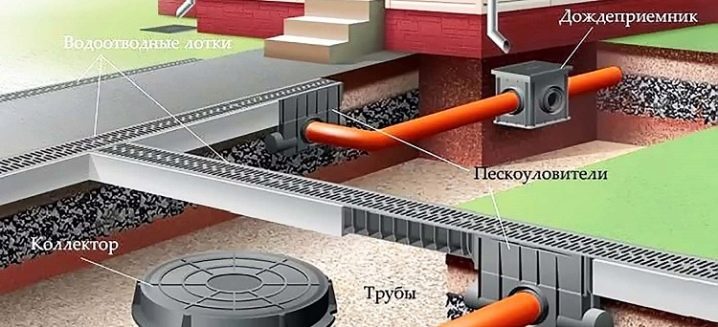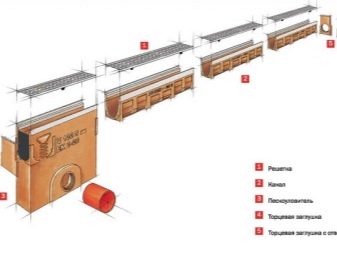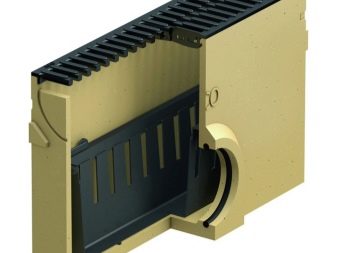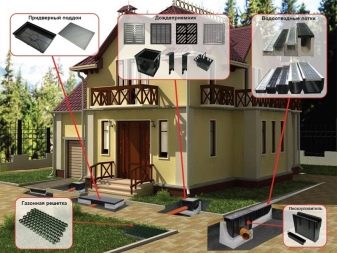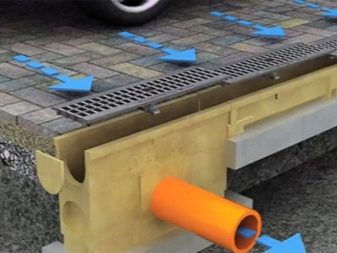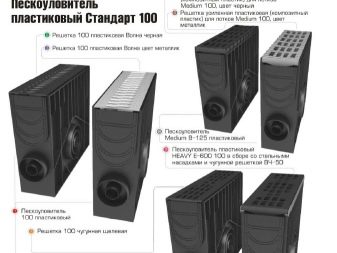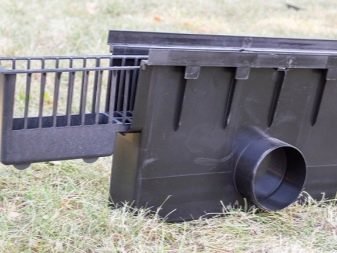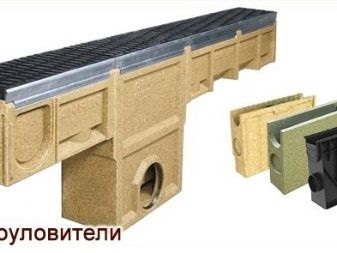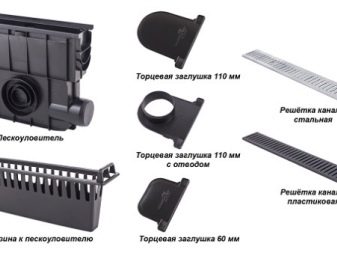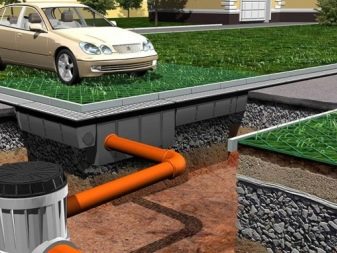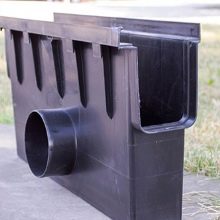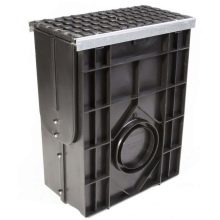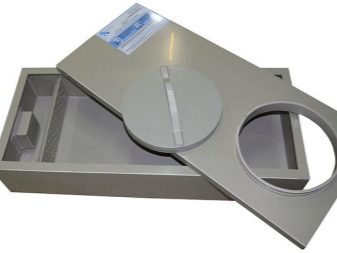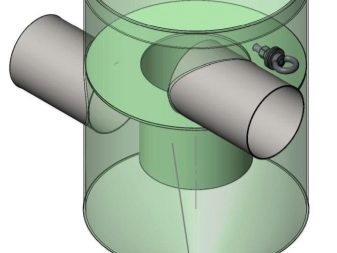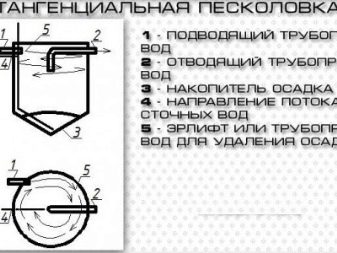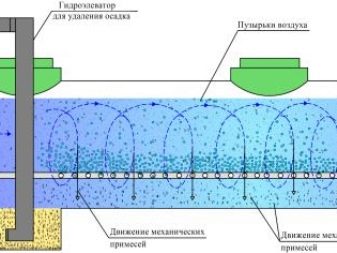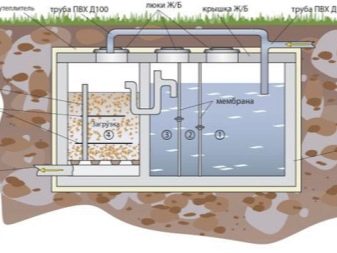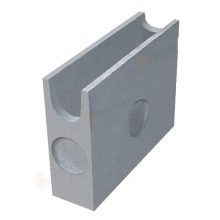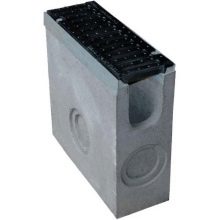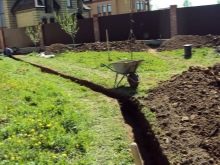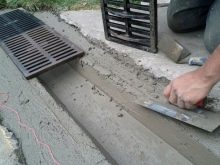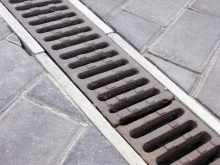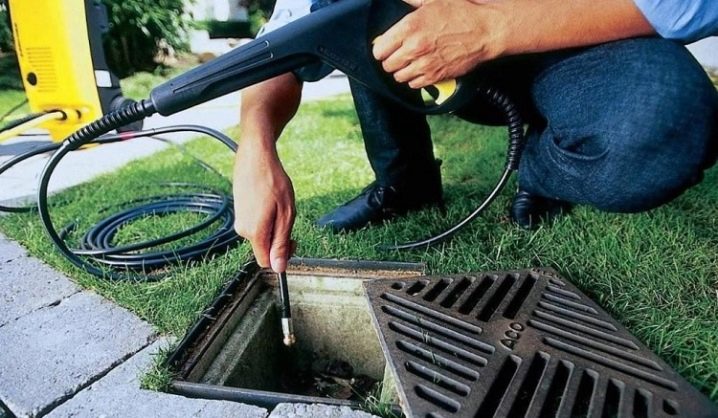Sand traps for sewage: characteristics, types and installation
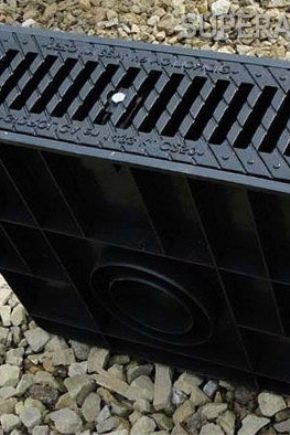
Storm sewers are used almost everywhere: on city streets and in suburban areas. It removes rain flows from the road, asphalt, it can be found in places where water flows from roofs.
Quite often, sewage can not cope with the drainage of water due to severe blockage in the pipes. To avoid this trouble, you only need to buy a good sand trap for sewage, both internal and external.
Device and principle of operation
When it rains heavily, with torrential streams, small particles of sand and soil all the time get into the sewage system, small debris, various types of suspended matter. To prevent clogging and set the trash box.He will catch oversized trash particles or soil, and collect them inside himself in a separate container, which will need to be cleaned from time to time. Cleaning this tank should be done in a timely manner to avoid more serious blockages in the pipes. It is necessary to do the cleaning after any heavy rain, that is, almost after each active use of the product.
The main task of this design is to receive liquid, which is collected in special trays, the recognition of sand, dirt or small particles of debris, the transfer of water flow into stormwater for its subsequent purification.
The dirt trap consists of a special reservoir. At its bottom should fall particles of sand and mud sediment that was washed from the street rain flow.
The principle of operation of the tank is as follows:
- rainwater flows from the road and from all sidewalks go to special water receiving trays, which are usually installed along the roads;
- afterwards, water flows under a given set trays or the very nature of the slope flow along the chain of all receivers that are in the storm system;
- a sand trap is installed at the end of all these links;
- the product can also be placed on the border at once of a number of streams going in different directions.
For the best cleaning of the drain, the product is also often supplemented with special baskets for collecting the garbage component. They are made of galvanized steel. This design helps to provide the most simple care when cleaning it from dirt and debris. Galvanized steel will allow the product to serve for many years.
Sand traps are used for different types of stormwater, different in height and design. They can be with one section or with many sections. This will depend on the characteristics required and the total amount of storm water.
Sewerage is supplied to the device with the help of couplings of the required size. The largest diameter of the pipe can not be greater than the width of the hydraulic opening of the structure. The product is simply connected through the tank to the shower. The sand trap, trays and grids present in it are more often made of vibropress concrete. Concrete construction without problems can withstand constant mechanical loads.
The design of a conventional trash box has a number of positive features.
- The housing is completely sealed, which allows you to better protect the sewage system from serious debris.
- The trap is made from materials that increase the service life of the system.
- Estimated loads on the product can cope with large stuffing rain flows.
- For the trash does not need special care. It is necessary only to clean it from time to time from garbage.
- The water in the product, after the mud has settled, can be used on the farm.
- A sand trap is often used in a service station for cars, where a fairly frequent accumulation of dirt and debris occurs.
Among the shortcomings can be noted the high cost, additional costs during installation. Also, many people forget to regularly carry out regular cleaning, because of what malfunctions begin.
Kinds
There are several varieties of sand-catching products for sewage systems, which are different from each other by the principles of operation and the structure of the structure.
Vertical products
Available as an elongated cylinder. Solid sediment will settle to the bottom of a large reservoir, and the purified liquid will begin to flow through the outlet nozzle. They are used most often on industrial objects.This type of construction is the second most popular application in domestic sewage systems.
Devices with horizontal placement
Horizontal variety for screening soil in the stormwater drain is considered the most simplified option, and the screening process itself is carried out very carefully. The design is installed in a horizontal position and consists of two elements. In the first of them, the wastewater will calmly go either in a straight line or in a circle. In the second, sedimentary particles are deposited. This is a type of product that is used almost everywhere - in construction, in residential buildings.
If you install at least one horizontal type trash box, you can be completely sure that your drainage system will not be clogged.
Tangential product
This is a round-shaped structure in which water flows tangentially. In a tank that has the same circular design, the liquid quickly twists, and various precipitations and impurities, due to centrifugal force, begin to settle on the walls of the chamber. Here they are under the weight of their weight gradually sink to the bottom.This kind of sand and mud catchers is not particularly in demand in domestic sewage systems, it is much more popular in European countries and the USA. In our country, the design has not won its customers because of the high price, in comparison with other types of this product.
Aerated trap
This type of device must always be supplied with air flow. It is for this reason that it is used extremely rarely: for its operation, it will also be necessary to buy pumps, as well as fans and various kinds of filters. Such products can often be found in food factories, where the liquid going to the drain has a high fat content. Inside the structure there is an aerator, which saturates the water with oxygen. This ensures better friction between the sand particles and their more efficient cleaning. Stormwater will also be much better cleaned of fat and its components, which will go to the bottom for more solid debris.
A trash box for an internal type of sewage system will prevent blockages in those places where sewers turn. This product will be extremely important in apartments that have a complicated sewage system, and in those houses where the kitchen is located on the first floor.
Quite often in studio apartments the owners mount the sink at a considerable distance from the riser. As a result, on the walls of pipes with turns, small debris and grease begins to collect and stagnate. In this kind of sewer systems, blockages very often appear, which can be extremely difficult to clean.
One of the most likely ways to overcome this problem is to install a trap directly under the kitchen sink. It will be necessary to clean it at least once every 7 days, but it is much easier than removing the blockages from the pipes themselves.
If we talk about materials, sand traps are usually available in three versions.
- Concrete construction. It has excellent performance characteristics: it is inexpensive, will last for a long time, good performance. However, such products also have negative features: they weigh a lot and they often form cracks that cannot be repaired.
- Plastic device. Manufacturers of sand traps began to use plastic not so long ago.Increased resistance to weather changes, durable housing, low weight, tightness, simple installation raised the rating of a plastic trash box from domestic consumers.
- Polymer concrete product. This design has taken over all the positive features of the structures of concrete and plastic. A very durable and compact product, and quick installation transforms a polymer concrete trap into a sales leader. But experts do not recommend its installation on their own. It is necessary to know well all the characteristic features of this design, so it is best to entrust the installation to specialists.
Installation
Installing the product during the arrangement of the entire drainage system is not necessary, but almost all experts advise to install it in order to be completely sure that the shower is not clogged. In apartments, the catchers are mounted only when a complicated sewage system passes through them, and for this reason there is always a problem with blockages, which are then difficult to remove. In other cases, installing a trash box in the apartments does not make sense.
It is necessary to mount the trash box before installing all filtering components.
The correct installation of the trash box ensures its high-quality work, for this reason need to adhere to the general scheme, which is recommended by experts.
- It is necessary to make a plot of the site under the future stormwater drainage. The place chosen for the trash box should be placed after the drain chute, before entering the system of its pipelines.
- Next, you need to dig a trench to install drain trays. The slope of the excavated trench should be approximately 2 cm by 1 m. Its depth should be calculated so that the edges of the top of the trays are 4-5 cm below ground level. Here you need to take into account the thickness of the concrete pouring pit and the height of the “cushion” of sand;
- The bottom of the trench must be well concreted. In order for the system to last as long as possible, professionals advise also to pour concrete over the trench walls. A layer of concrete will not allow the elements of the device to skew in the process of using stormwater. If you decide not to concrete the walls, the voids in the trench can be filled with a mixture of sand and cement.
- All the system components included in the kit are installed and connected to each other. The reliability of all connections will be provided with special snaps. If there is a separate desire to obtain increased tightness of all joints, they can be additionally treated with a special, waterproof sealant.
- Over all elements grilles with protection are mounted.
Care
Do not forget to clean your sand trap in time: if you have a home version of the product, you need to clean it once a week, if the street version - after every rainstorm. Cleaning can not be postponed, because if the product overflows, all the existing dirt will begin to go straight into the pipes and clog them.
The design intended for long-term operation needs to be washed from time to time with high quality. From this kind of purification measures will depend directly on the effective performance of all stormwater.
In addition, this device will need to double check a year. Occasionally you will have to measure the height of the sediment in the product tank. Pumping of this sediment is performed when filling the tank to one third of the total volume. Usually this is needed once a year.
A general product check is carried out once every two years.To this end, the walls of the tank are washed under high pressure. Be sure to rinse all available filters. This will make it possible to improve the quality characteristics of water in the sewage system. Implementation of unloading should be done according to the degree of clogging. For high-quality unloading, the device lifts all the blocks from above to rinse them under serious water pressure. You can also use special equipment for more detailed cleaning.
After cleaning the tank from sediment particles and plaque, you need a pump to quickly pump out all the used liquid. As soon as the cleaning process is completed, the trash box is installed in its original place. After mounting the device, it is filled with water to prevent it from being pushed out when the soil fits.
In the next video, see about the device of storm sewers and the installation of trays, sand trap and water intake.
